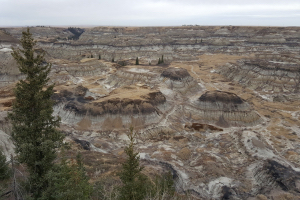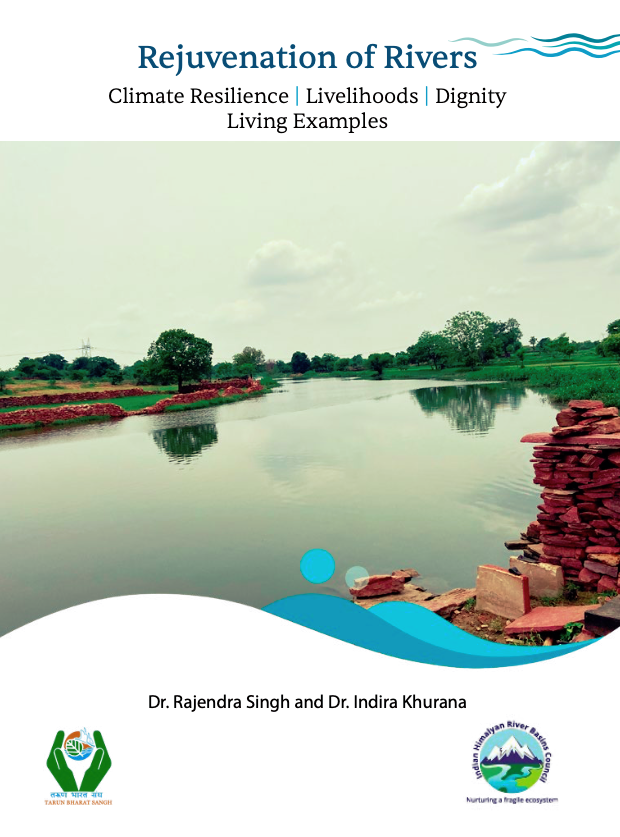
Book Launch:
Rejuvenation of Rivers – Climate Resilience | Livelihoods | Dignity Living Examples


By Dr Rajendra Singh* and
Dr Indira Khurana**
Rivers under threat#
 According to the first global initiative that assessed water security for people and river biodiversity, rivers of the world are threatened due to mismanagement and pollution, which endangers eight of every 10 people as well as 10,000- 20,000 species. Some of the factors behind this are over-extraction, encroachment, river pollution, intensive agriculture, catchment disturbance, deforestation, sand mining and dam building. Over-extraction has affected their flow and several perennial rivers have now turned seasonal. Some have even disappeared. Dams and barrages have affected the river ecology and the habitat of river species and caused disasters and displacement. Sand mining has altered riverbeds, resulting in a river changing course, causing floods and reducing recharge. Domestic, sewer and industrial pollution have affected water quality and turned rivers into receptacles of human-generated waste.
According to the first global initiative that assessed water security for people and river biodiversity, rivers of the world are threatened due to mismanagement and pollution, which endangers eight of every 10 people as well as 10,000- 20,000 species. Some of the factors behind this are over-extraction, encroachment, river pollution, intensive agriculture, catchment disturbance, deforestation, sand mining and dam building. Over-extraction has affected their flow and several perennial rivers have now turned seasonal. Some have even disappeared. Dams and barrages have affected the river ecology and the habitat of river species and caused disasters and displacement. Sand mining has altered riverbeds, resulting in a river changing course, causing floods and reducing recharge. Domestic, sewer and industrial pollution have affected water quality and turned rivers into receptacles of human-generated waste.
Thirty of the 47 largest river systems which together discharge half of the global runoff to the oceans are at risk. In 2019, a paper in the science journal Nature informs that only 37 per cent of the planet’s longest rivers remain free-flowing. Nearly 60,000 dams have been built worldwide, with more than 3,700 under construction or planned.
The pollution of rivers does not remain confirmed to the rivers themselves and spills over into groundwater, lakes floodplains and into seas and oceans. And from there, this pollution enters the human body, causing debilitating disease and even death.
Climate change and rivers
How is climate change affecting our rivers and us?
- For a start, the rapid melting of glaciers will increase the flow of rivers, causing floods, and as glaciers melt away, glacier-fed rivers will gradually run dry. According to Navroz Dubash, in the Indian Himalayas, small glaciers of less than 1 sq km have been retreating quickly. In the Chenab basin in Himachal Pradesh, the area of small glaciers decreased by 38 per cent between 1962-2004, while the area of large glaciers (greater than 10 sq. km) decreased by 12 per cent in the same period.
- As the monsoon pattern changes, increased precipitation within short intense spells will lead to floods in rivers and flooding of adjacent areas. Up to August 2021, India witnessed several extreme weather events, affecting humanity and the ecology, with widespread devastation from rural, urban and semi-urban areas, all during the time of COVID-19. As on July 2022, different parts of India witnessed devastating floods: Assam, Bihar, Uttar Pradesh, Maharashtra, Andhra Pradesh, Himachal Pradesh, and Tamil Nadu.
- With the symbiotic relationship between groundwater and rivers disrupted in most places, rivers will turn seasonal, dry up, and lead to drought. These are no longer projections and predictions. Drought in the US has led to a decline in water availability in rivers such as Colorado. Droughts, floods extreme weather events are increasing in intensity all the way from Madagascar in Africa to Iran in the Middle East, to Asia and South America’s Pentanal, the world’s largest tropical wetland. In the first half of 2021 itself, drought was prevalent in most continents according to an August 2021 paper published in Nature.
- As climate-related disasters increase, so will displacement, distress and migration, with incalculable health, psychological, social and economic burdens. As water-related disasters continue to rise and cause misery, poverty and inequality, it is time to face water challenges head-on by strengthening efforts on adaptation for developing resilience.
Climate change has thus resulted in an increase in the number and intensity of natural disasters such as cyclones, storms, floods and droughts.
Healthy rivers offer a cushion against climate change
Rivers can significantly help in adaptation and developing resilience. Their floodplains have the potential to function as sponges for climate change, absorbing excess water and pushing it into groundwater ‘banks,’ and offering water in times of drought. When the rivers are allowed to flow uninterrupted, water is available year-round. They thus offer protection against climate shock. For this, the connection and symbiotic relationship between groundwater and surface water needs to be functional: Rainwater needs to recharge groundwater and rivers need to be allowed to flow.
Climate resilience is thus strengthened through healthy ecosystems, of which rivers are key. In the words of Rajendra Singh, “We must link the hearts, minds and actions of the people with rivers for a healthy ecosystem and for our own health, peace and security.”
#Excerpts from the book Rejuvenation of Rivers – Climate Resilience | Livelihoods | Dignity Living Examples, by Dr Rajendra Singh and Dr Indira Khurana, published by Tarun Bharat Sangh and Indian Himalayan River Basin Council. The book will be released in Stockholm on August 28, 2022.
*Rajendra Singh is known as the Waterman of India and is an internationally acclaimed water conservationist.
** Dr Indira Khurana, PhD, has been working on water and natural resources for more than two decades.





